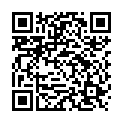|
|
|
| Module code: WIBASc-525-625-Ing22 |
|
2V+2PA (4 hours per week) |
|
5 |
| Semester: 5 |
| Mandatory course: no |
Language of instruction:
English |
Assessment:
Project work with presentation
[updated 19.01.2022]
|
WIBASc-525-625-Ing22 Industrial Engineering, Bachelor, ASPO 01.10.2013
, semester 5, optional course, general subject
WIB21-WPM-I-704 (P450-0007) Industrial Engineering, Bachelor, ASPO 01.10.2021
, semester 5, optional course, general subject
Suitable for exchange students (learning agreement)
|
60 class hours (= 45 clock hours) over a 15-week period.
The total student study time is 150 hours (equivalent to 5 ECTS credits).
There are therefore 105 hours available for class preparation and follow-up work and exam preparation.
|
Recommended prerequisites (modules):
WIBASc145 Physics
WIBASc165 Mathematics I
WIBASc245 Manufacturing Engineering
WIBASc265 Mathematics II
WIBASc355 Computer Science / Programming
WIBASc445 Electrical Engineering
[updated 19.01.2022]
|
Recommended knowledge:
good knowledge of English is recommended
[updated 19.01.2022]
|
Recommended as prerequisite for:
|
Module coordinator:
Prof. Dr. Frank Kneip |
Lecturer:
Prof. Dr. Frank Kneip
[updated 19.01.2022]
|
Learning outcomes:
Students, who successfully passed this module, are able to
decribe different sensors, their functional principle and corresponding advantages/disadvantages
decribe different actuators, their functional principle and corresponding advantages/disadvantages
decribe different hydraulic components, their functional principle and corresponding advantages/disadvantages
decribe different control strategies, and are able to select suitale control approaches with respect to their application in a given system
select suitable components in order to provide a suitable functionality of a given system and substantiate the reasons for the selection
develop a concept for a prototypical implementation of a given system and build the concept using e.g. a microcontroller (Arduino,...) and corresponding sensors, actuators,...
[updated 30.11.2019]
|
Module content:
Part 1: Lecture
1. Sensors
1.1 Fundamentals of sensors
1.2 Analysis of selceted sensors (functional principle, advantages/disadvantages)
1.3 Application of sensors in systems
2. Actuators
2.1 Fundamentals of actuators
2.2 Analysis of selceted actuators(functional principle, advantages/disadvantages)
2.3 Application of actuators in systems
3. Hydraulic components
3.1 Fundamentals of hydraulic components
3.2 Analysis of selceted hydraulic components (functional principle, advantages/disadvantages)
3.3 Application of hydraulic components in systems
4. Control strategies
4.1 Feedforward and Feedback control
4.2 Discontinous controllers
4.3 Continous controllers (in particular P-, I-, PI-, PD-, PID-controller)
4.4 Controller parametrisation
4.5 Properties of the different controller types
4.6 Applications of different controller types in systems
Part 2: Implementation of a prototypical system
1. Analysis of the requirements
2. Concept development and selection of the components
3. Prototypical implementation of the system sing e.g. a microcontroller (Arduino,...) and corresponding sensors, actuators,...
[updated 20.01.2020]
|
Teaching methods/Media:
Lecture and group work
[updated 30.11.2019]
|
Additional information:
This module is suitable for incoming students with a learning agreement
[updated 30.11.2019]
|
Recommended or required reading:
Fraden, J.: Handbook of Modern Sensors Physics, Designs, and Applications, Springer, 2016
Heimann, Gerth, Popp: Mechatronics: Components Methods Examples, Carl Hanser Verlag, 2006
Isermann, R.: Mechatronic Systems: Fundamentals, Springer, 2005
Mühl, T.: Introduction to electrical Measurement Technology; Vieweg und Teubner, 2008
Pan, T., Zou, Y.: Designing Embedded Systems with Arduino: A Fundamental Technology for Makers. Springer, 2018
[updated 20.01.2020]
|

